Table of Contents
Before you get to see a desktop software, mobile app or web application developed by a big company you can be sure that it has been tested before the release.
I’m showing you how you can get paid for testing such products. All work is completely online.
| Investment needed: | None! |
| Working hours: | Depends on the project to test |
| Earning possibilities: | Depends, hourly rate often over $15 |
| Skills needed: | Basic level of English (programming and software skills are of advantage) |
Why do companies pay for software testing?
The main companies paying for software testing are big brands.
Nearly every Fortune 500 company that has their own software needs to run extensive tests. The reason is that software not working correctly will have a big impact, either external through unhappy customers or internal because of employees that cannot work with the software.
More and more companies prefer to outsource the testing to external providers. Those software testing services often let ordinary people and software experts do tests.
This will help the developers to understand the user’s perspective better and also helps to fine tune technical details by the insight they get from software experts. Also, this ensures that developers can fully concentrate on developing.
You can become a software tester by starting as an ordinary software tester and then specialize in a certain field to get highly paid projects.
Become a software tester at uTest
I’m using the software testing platform uTest.
This site connects testers and brands around the world. There’s no need to look for companies needing testing on your own.
Everyone can register at uTest and start working as a software tester for free.
uTest features
- High earning possibilities
- Free to join
- PayPal or Payoneer payout
- Testers from all over the world are needed
- Customers include brands such as Google, Netflix and USA Today
- Accept or reject testing projects as you like
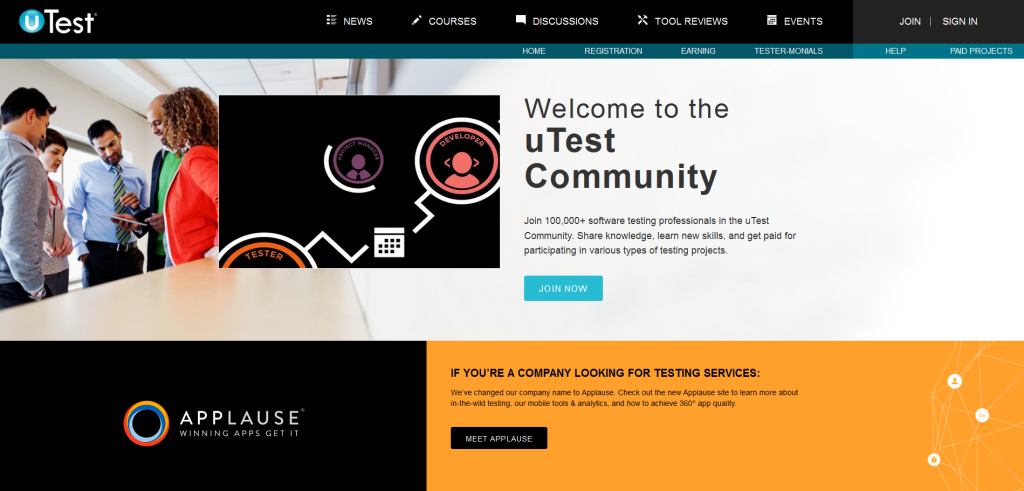
What can be tested at uTest?
There are five different types of software tests at uTest. Let me quickly explain them below.
Functional testing
In functional tests your task will be to make sure the software works as the developers want it to work.
When you press “Save” and the software doesn’t save the user will have a very frustrating experience. On a website, when you navigate to “About Us” you surely don’t want to be redirect to the homepage.
Functional testing is done to ensure the software functions as planned.
Usability testing
Usability tests determine if a software is easy to use.
One thousand different options and small text will be a nightmare for every user. A software aimed at a non-technical audience should not provide descriptions with dozens of technical terms. Colors can also reduce usability, a blue font on a blue background will make text nearly unreadable.
If you want to save your progress in the software, but you can’t find the save button, the developer should consider putting the button in another position.
Usability tests determine if the software is easily usable by its target audience.
Load and performance testing
Have you used a software that took ages too load or crashed all the time?
In such cases, the developers should have paid for load and performance testing before releasing their software.
The testers will try to make the software crash by increasing factors related to loading time and performance. This is mostly done with special software and scripts.
The final report will help developers to fix issues that reduce the performance of the software.
Security testing
It’s the nightmare of every big brand out there. The company website gets hacked, user data gets stolen and this occurrence is on the news, worldwide.
If a software costing hundreds of dollar gets cracked and is spread all over the internet available as a free download, the business could experience massive losses.
Security testers are trying to hack or crack a software. When they are successful, they tell the company how they did it, so the company can close the loophole before a bad guy finds it.
Localization testing
In the globalized world we live in most software is not limited to one country only. Instead, many companies need their software to work in different regions of the world.
There are possible issues here related to translation and culture. Some features of the software may only be available in specific countries while the software is being sold internationally.
Localization testers look for translation, formatting, accessibility errors and other country/culture specific issues.
How to earn money online through software testing
You can start right now and you’ll get your first software testing project in the next weeks. For the following guidance I’ll assume that you have no previous knowledge of software testing.
1. Register at uTest
Register an account at uTest and verify your email address.
2. Fill out your profile
In the next steps, you can choose your testing preferences, your skills and the software/hardware you have.
While being logged in your uTest account press “Expand profile”.
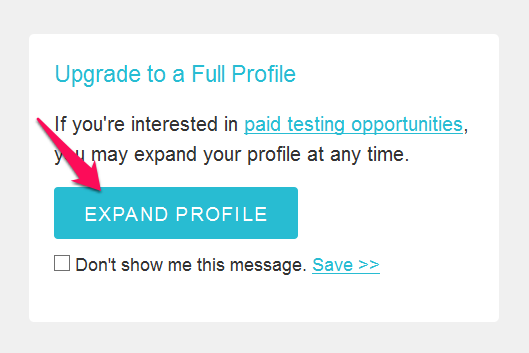
Project Preferences
Choose how many hours you’ll be available for software testing per week.
Tick the types for software testing you want to do. Security and load testing require special skills, so as a beginner you should tick functional, usability and localization only. Your choice can be edited later at any time!
Choose the type of hardware you have. Don’t forget about your mobile phone or gaming devices such as Playstation. Later, you will have to add each device you own individually.
Leave bug fixes activated. This enables you to also participate in tests that verify if bugs have been fixed or not.
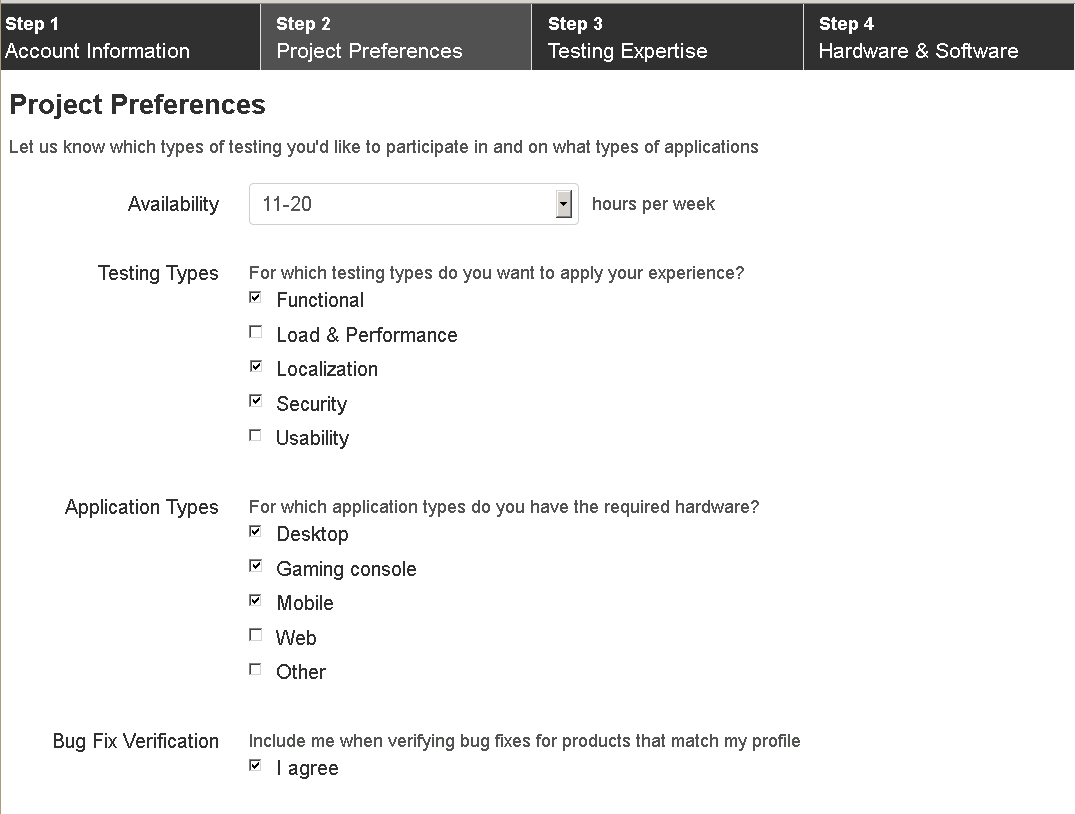
Save your settings.
Testing Expertise
At testing expertise, you can choose your skills related to software testing.
If you have no idea of software testing, tick “Fn, Ln, Ux”. This stands for Functional, Localization and Usability. These are the tests you can do without special experience and I recommend every beginner to start with them.
In Functional you should choose “Novice” for each of the following tests:
- Manual – Exploratory
- Manual – Test Case Writing
- Manual – Test Case Execution
Those are the only ones that don’t require prior experience or special software.
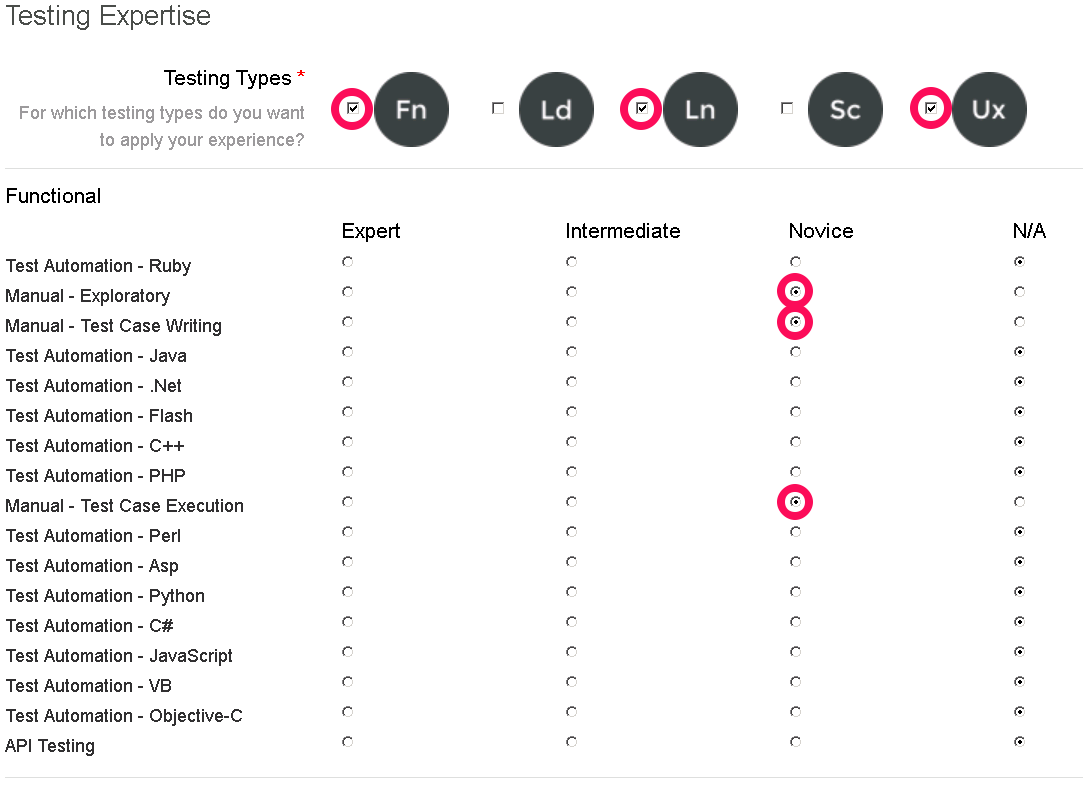
In Usability set “Usability report creation” to “Novice”. If you get a job like this, you’ll have to write a small report (with guidance), whereas everything else requires special experience.

Leave Localization testing blank for the beginning.
Choose your language skills under “Language” and set them to the level you are in the language. You can set your level to “Expert” in your native language. I’m native in German, so I’ll obviously tick that (although it took me ages to understand German comma rules 😛 ).
Don’t forget to tick your foreign language skills even if you are just on a beginner’s level!

Save your progress.
Hardware and Software
At hardware & software you have to add all devices you can run tests on.
Pick, for example, your Desktop computer with Windows 8 64-Bit, your Samsung Galaxy Nexus smartphone, your PlayStation 3 and so on, until you added all hardware and the software that runs on it.
Make sure to tick “Web”. This is related to website tests. You’ll be able to do that as well since you are obviously browsing on a website right now 😛
This task should be quite straight-forward.
One thing that I do recommend is to tick as many browsers as possible. It’s very easy to quickly install an additional browser, however, this will make you the right candidate for way more tests!
If you are having Internet Explorer, Chrome, Opera and Firefox you’ll be a possible candidate for nearly every website test a company could run.

Save your choice.
3. Gain your first experience with software testing
You’ve set up your profile with all necessary information.
uTest will contact you within a week to invite you to a “Sandbox” testing. This has nothing to do with playing in sand, rather this is an example testing project very similar to a real software test. This will show you what you need to consider and how the general testing process works.
Be careful here, as this will also be used to rate your testing level. You have to read exactly what they want you to do and follow their instructions, then nothing can go wrong. After finishing this, the real jobs will start coming in.
I don’t want to leave you completely in the dark, so I’m now outlining the general testing process.
I cannot give you a real example of a software test. This is related to NDAs software testers often have to sign (means I’m not allowed to share any information about the companies running tests or I have to pay a huge fine).
4. The general testing process
You’ll get an email to your inbox whenever there is a new software test available.
The subject line will be “You’ve been invited to a paid testing project for [company name]“. Make sure those emails are not getting thrown into the spam folder by adding no-reply@utest.com to your contact list.
Read the requirements
When you get such an email and have the time available, click on the link in the email that says “Review this test cycle”.
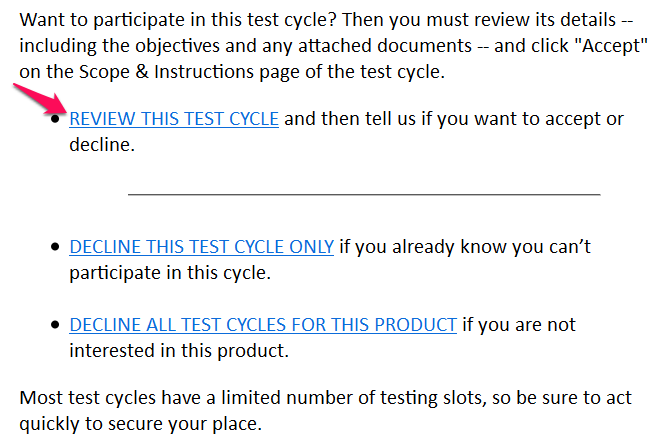
You have to log in your uTest account and you’ll be shown what exactly your task would be if you would accept this job.
Read what the scope of the test includes, this means which areas of the software you should test and which not. Check also the attachments and the chat to see if there are further things to consider.
If you want to participate in this test, you have to press “Accept” quickly because the number of testers on each project is limited. First come, first served!
Submitting test cases and/or finding bugs
The requirements will usually state if your task is about finding bugs, submitting a test case or both. Let me explain the difference between those at the example of ProfitArmy.com.
Findings Bugs
When you would participate in a test cycle for finding bugs on ProfitArmy.com, e.g. in a functional test, your task would be to check my website for things that don’t work. For example, you’d find that a link in the footer is not working.
Before you can file a bug report, you’d first have to check if another tester was quicker and already reported this bug. uTest is only paying once for each bug.
If no one else reported this bug yet, you’d state in your report where you found the bug, how this bug can be reproduced (“1. Go to profitarmy.com 2. Scroll down to the bottom of the page 3. Press “Privacy Policy”) and document the bug with a screenshot. However, the customer might have special requirements for the bug reports you should know by now.
This bug then has to be approved by either the company or a uTest employee. They will also determine how critical this bug is, as critical bugs usually will have a higher payout for the tester.
Submitting test cases
When participating in a test cycle requiring you to do a test case, your task would be, for example, to sign up for my newsletter, open your email account and verify your email address.
You would then have to tell me if there was an issue, like that you didn’t receive the email asking for verification.
Often, companies want software testers to file several test cases, so in the example above, I could want you to do a test case with using a Yahoo email address and another one with an Outlook email address.
I remember doing a test case for a company that wanted to test if their software interferes with different antivirus software. My task was to download and install the software while having an antivirus program like Avira Antivir running.
Software tests with test cases are my favorite ones. The reason is that you’ll even get paid if everything works correctly, whereas you have to find a bug to get paid in the bug finding test cycles.
5. Rise up in uTest rating system
All testers are rated based on their activity and the quality of their tests.
There are six different levels, in ascending order: Rated, Proven, Bronze, Silver and Gold. The higher you get up in the levels, the more you get paid for each bug.
Each rating is always for one field only, so you could be Gold level in functional testing but only Bronze in usability testing.
The levels are seen in relation to other uTest testers, e.g. the top 3% of all functional testers have the Gold level.
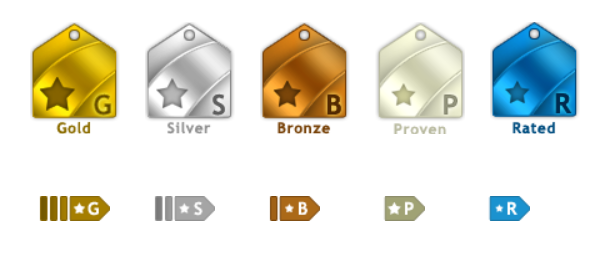
The following factors are taken into account for calculating your level:
- Lifetime participation: how many reported and approved bugs
- Recent participation: active in last three, six or twelve month
- Reliability: reporting correct bugs and test cases
- Quality of bugs: the more valuable your bugs are, the better
To increase your tester level, you have to work frequently and submit as many “expectionally” or “very valuable” bugs as you can.
Also, you need to reduce mistakes by reading the requirements and filing bug reports the way the customer wants them.
You shouldn’t accept a test cycle and then don’t work at all. Also, if you know you are not available for testing, decline the test so others can jump in. This will also produce a positive impact on your rating.
6. Expand your software testing career
Congrats! You’ve learned everything you’ll need to start your software testing career.
The next step is to gain more knowledge. You might want to specialize in a certain field, write better reports or just learn more about the uTest community.
The go-to place is the uTest University. Here, you’ll find hundreds of courses on software testing related topics. Work through some that interests you.
Whenever you need help or want to exchange with other software testers, you should visit the uTest forums.
Problems with software testing at uTest
After I wrote all the positive stuff about uTest, I also have write about the negative aspects.
About two months ago I was invited for a localization test cycle for a new browser. The interface of the browser had already been translated to German and our task was to make sure that the translation was accurate.
I found a few typos and grammar mistakes, so I filed a bug report about each of them. Normally, the task would end here and I’ll get my payment soon.
However, the customer didn’t approve my bug reports giving the reason “works as designed”.
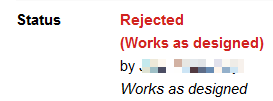
Of course the software works as designed, but this was not what they wanted me to test. They wanted me to find translation errors and this was what I did.
I contacted the uTest employee responsible for this test cycle who said there was nothing he could do.
I want to make you aware that as awesome software testing is most of the time, you are always dependent on the customer. If they are idiots or want to abuse the system, you’ll might not get the payment you deserve.
Theoretically, you can dispute a rejection but this didn’t help in my case.
However, this was just one experience out of many test cycles, so this does not happen often but can actually happen.
Summary
- Software testing is mainly used by big brands
- You can use the software testing platform uTest to find paid projects
- There are five different types of software tests: functional, usability, load & performance, security and localization
- Fill out your profile at uTest
- Gain your first experience in a Sandbox test
- The general testing process varies for test cycles related to finding bugs or submitting test cases
- uTest rates what you do on their platform. The better you perform, the higher payment you’ll get
- You can expand your software testing career through using the uTest university and the forums
- There are also negative aspects related to software testing
I love software testing, as I feel it’s a straight-forward, serious and well-paid way to earn money online. Will you try it yourself?


This works. Wow, I would have been able to do my first test soon after registering, but because I had holiday plans I didn’t accept it. When I was back from holiday I did receive a new request where I had to test a website in my own language. And it was for a very big company.
So don’t think it doesn’t work. It works! And it is very nice to do.
Awesome to hear about your success, Suzanne!
Hi..
I have one question regarding uTest.
I passed Sandbox test(got my test case and 2 bugs I had to found approved) around 1 week ago. But didn’t get anything new from them yet regarding some paying job.
Do I need to do something more before I can start receving some jobs or just have to wait now? And how often do you get something to test?
Thank you!
Robert
Hi Robert,
if you have filled out your profile, followed my recommendations and did the Sandbox test, you just have to wait a bit. How long it takes depends on the demand for testers with your profile (devices, testing expertise and location).
I’m very lucky because there are a lot of projects for the German market but not many German software testers. I get several testing opportunities everyday due to that.
That being said, the more experience you’ll gather the more projects uTest will offer you anyways.